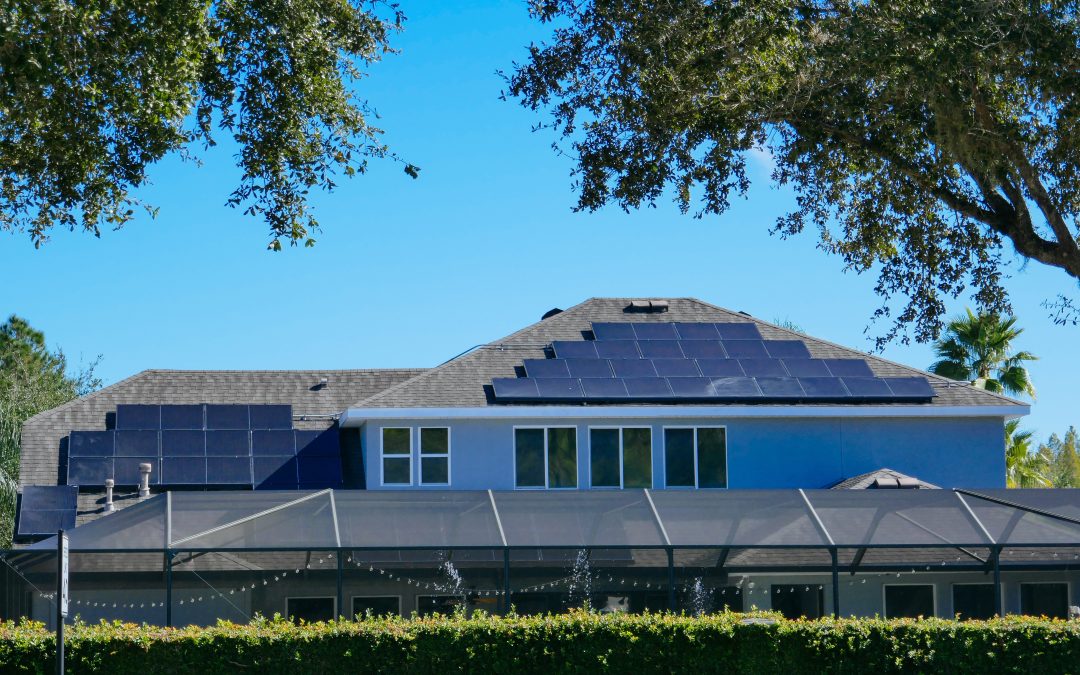Solar panels can be installed on many types of roofs, but not all. The feasibility of solar panel installation depends on several factors, including the roof’s material, angle, direction, and structural integrity.
Roof Material: Solar panels can be installed on a variety of materials including asphalt shingles, metal, rubber, and even clay tiles. However, some materials like slate or cedar tiles can be more challenging due to their fragility. Advances in mounting technology have made it easier to install on different materials, but professional assessment is always recommended.
Roof Angle: The angle of the roof plays a significant role in the efficiency of the solar panels. Ideally, the roof should have a pitch between 15 and 40 degrees, although this can vary based on geographic location. Flat roofs can also accommodate solar panels with the use of angled mounts to optimize sunlight exposure.
Roof Direction: In Florida (Northern Hemisphere), south-facing roofs are ideal for solar panel installation as they receive the most sunlight throughout the day. East and west-facing roofs can also work but may not be as efficient. Advances in solar technology, such as bifacial panels, can now capture sunlight from multiple angles, improving efficiency on less-than-ideal orientations.
Structural Integrity: The roof must be structurally sound to support the weight of the solar panels. An inspection by a professional is necessary to ensure the roof can handle the additional load. Reinforcements may be needed for older roofs to support solar installations safely.
Components of Solar Panel Installation:
- Solar Panels: These are the main components that convert sunlight into electricity.
- Mounting Hardware: This includes racks and brackets used to secure the solar panels to the roof.
- Inverters: These devices convert the direct current (DC) produced by the solar panels into alternating current (AC) that can be used in the home.
- Wiring and Connectors: These are used to connect the solar panels to the inverter and the inverter to the home’s electrical system.
- Metering Equipment: This equipment is used to measure the amount of electricity produced by the solar panels.
Easiest Roofs for Solar Installation:
The easiest roofs to install solar panels on are typically those with a gentle slope and made of materials like asphalt shingles or metal. These materials are durable and easy to work with, making the installation process straightforward.
Challenging Roofs for Solar Installation:
On the other hand, the hardest roofs to install solar panels on are those made of fragile materials like slate or cedar tiles, as they can break easily during installation. Steeply pitched roofs can also pose a challenge due to the difficulty of installation at high angles. Professional installers have specialized equipment and techniques to handle these challenges, but it may increase the cost and complexity of the installation.
Consultation and Professional Assessment:
Remember, it’s always important to consult with a professional solar installer to assess the suitability of your roof for solar panel installation. They can provide a detailed evaluation and customized solution based on your specific roof type and condition.
Updated Information:
With the evolving landscape of energy policies, particularly in Florida, it’s crucial to consider the timing of your solar panel installation. Changes in net metering policies can impact the financial benefits of solar energy. Net metering allows homeowners to sell excess energy back to the grid, reducing overall energy costs. Installing solar panels before these policies change can lock in favorable terms and maximize your return on investment.

